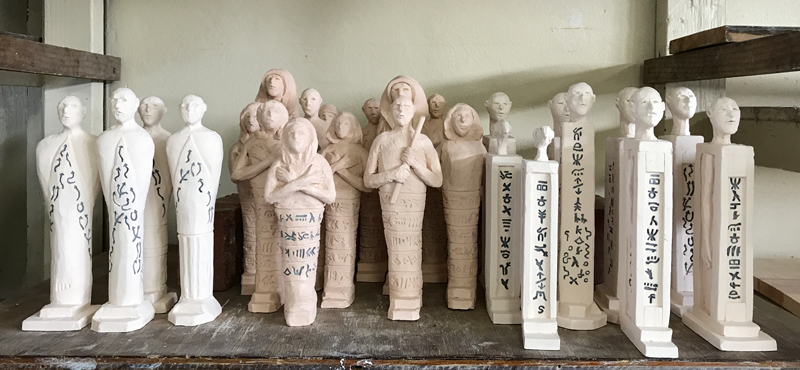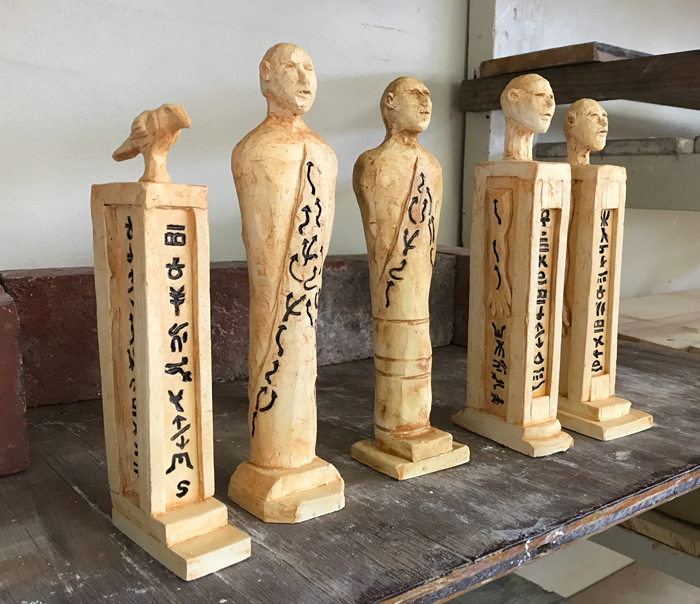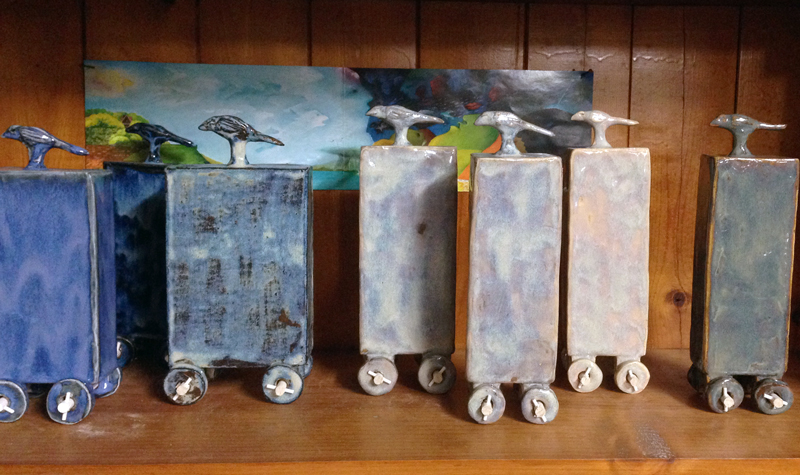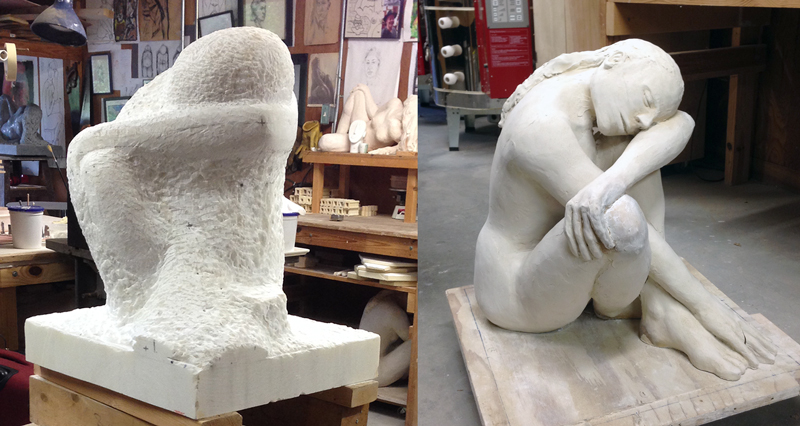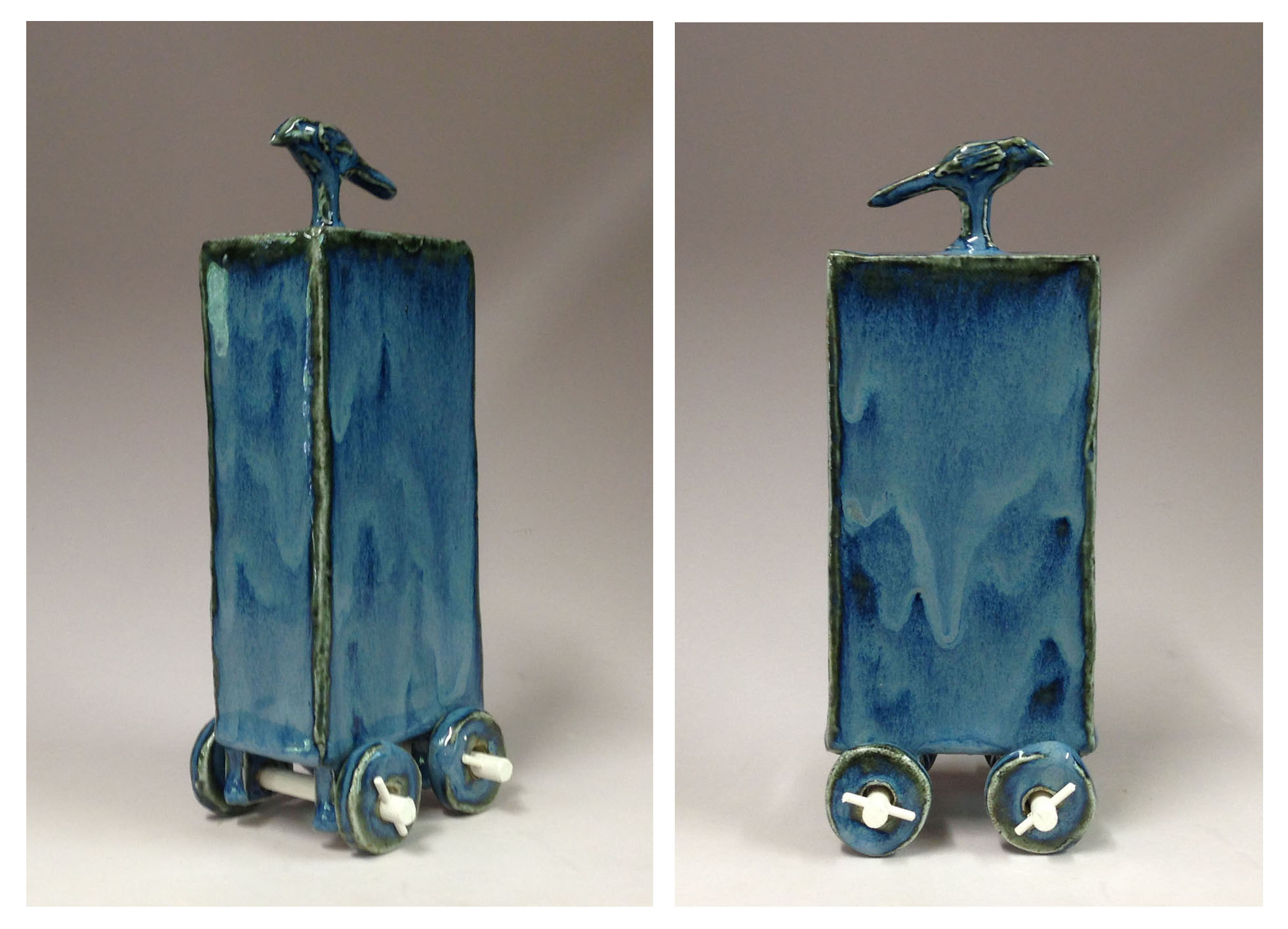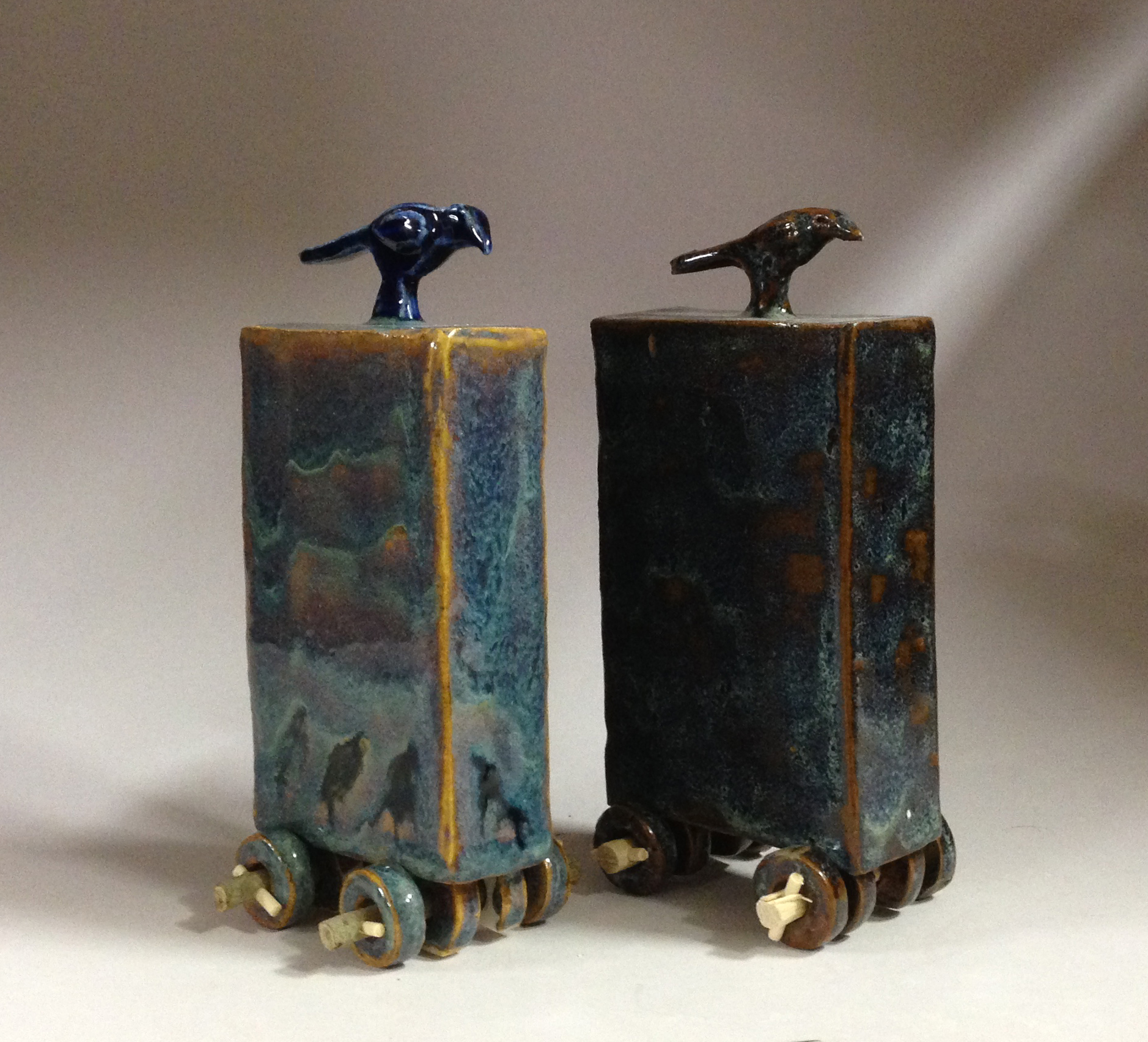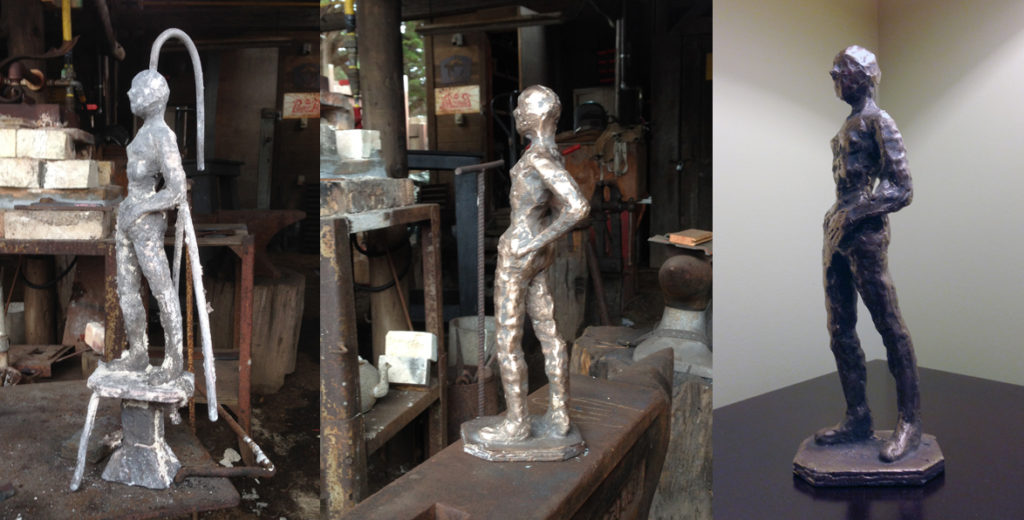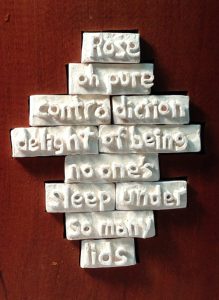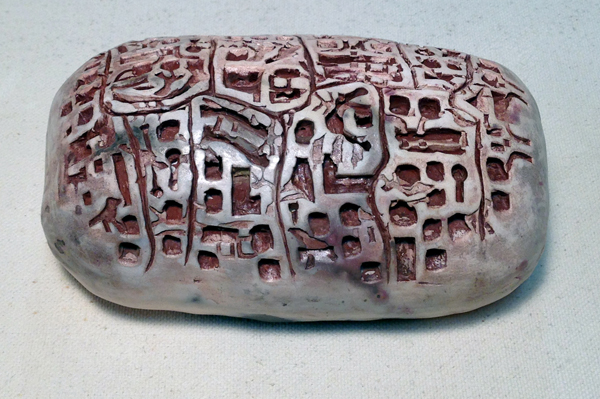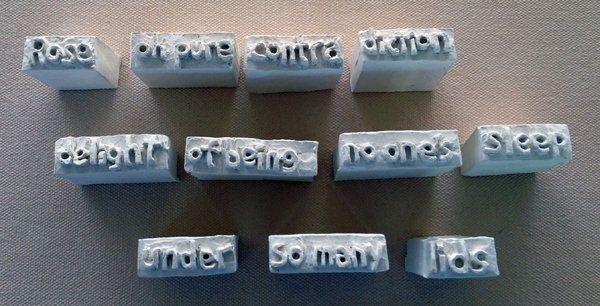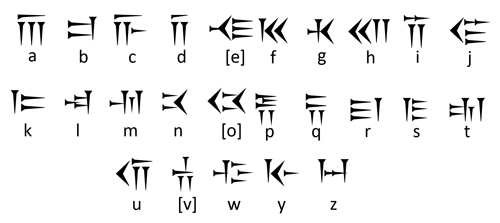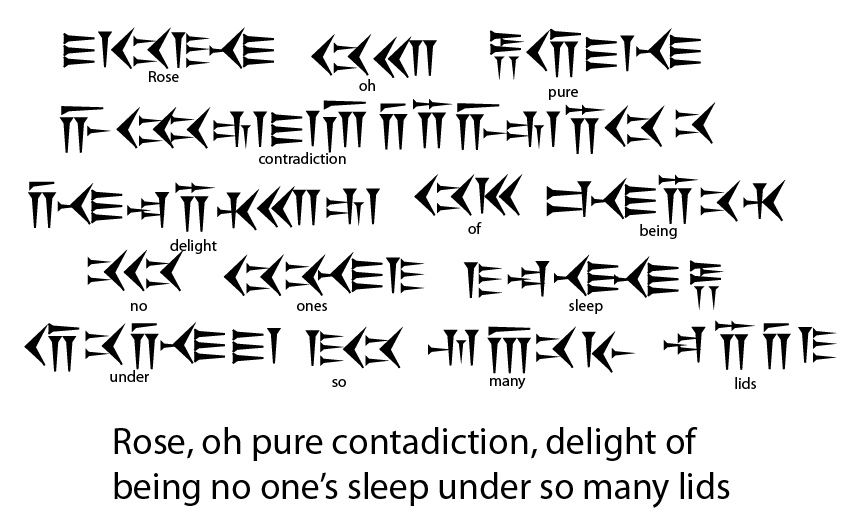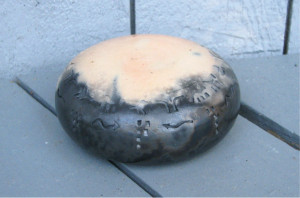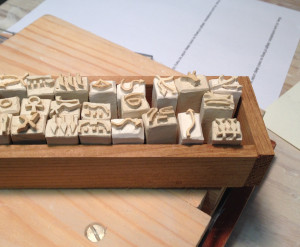In October, I worked in the ceramics studio at the Mendocino Art Center. I made clay figures that had some resemblance to, or aspects of, ancient shawabtis and contemporary vigango (singular: kigango). Shawabtis are Egyptian figurines placed in tombs; in the afterlife, if you are called to do work, these figures come to life and do your work. Vigango are wooden grave markers (4-5 feet tall) currently used in Kenya. They help keep the deceased spirit present in real life. Here are the bisque fired group of figures. I tried various glazes but was not very enthusiastic about the outcome. The smaller grouping uses an red iron and rutile wash.
